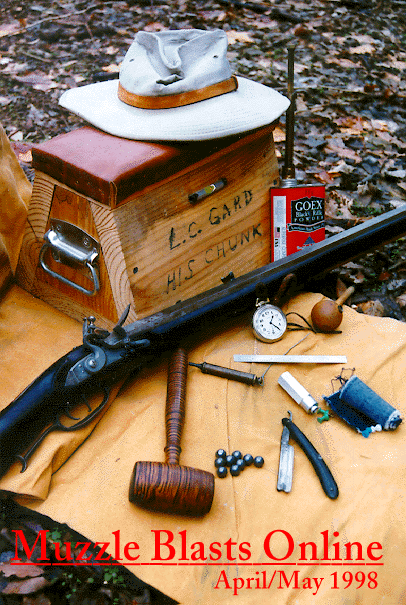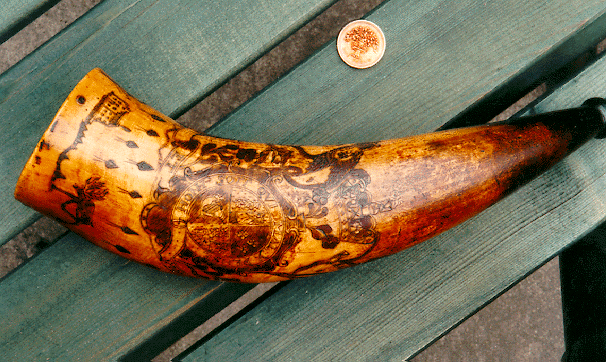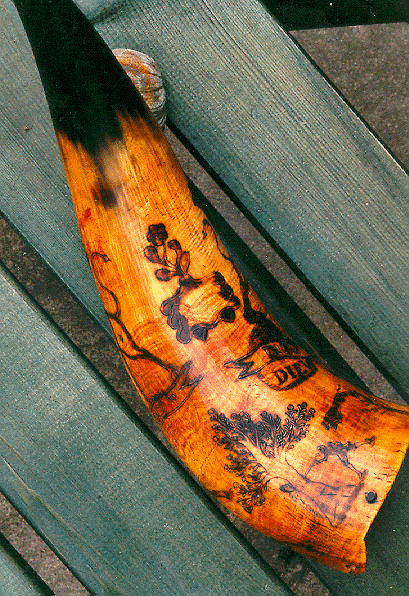|
Muzzle Blasts Online |
|
...for the muzzleloading enthusiast |
|
The muzzleblasts.com domain, subdomains, content, etc., are neither affiliated with the NMLRA nor its paper magazine Muzzle Blasts |
|
Muzzle Blasts Online |

|
|
|
|
|
|
A Fresh Horn

|
|
|
The photos will speak for themselves. This is a plainly fashioned horn which has nonetheless been shaped down considerably, as evidenced by the swelling near the pouring tip. Scrape marks are still present on the horn and the engraving was applied over this imperfect surface.

|
|
|
Individual makers of horns are difficult to identify because few of them signed their products. But surviving horns can be attributed to the same hand by comparing details of design and calligraphy. Distinctive features on my horn include the lion's face, spear-point trees, and the deer. [Editor's Note: Alert students of antique horns will detect a clear connection between the author's horn and the work of the "Pointed Tree Carver" documented in The Engraved Powder Horn by Jim Dresslar and David Wesbrook (Bargersville, IN: Dresslar Publishing, 1996); see specifically pp. 23, 111, and 113.] This horn also bears some unskilled engraving presumably added by its owner: a couple of trees and the word Dieu enclosed by a snake.

|
|
|
Since this horn is missing its base plug, its vendor assumed it to be a blowing horn. I don't recall his asking price, but we settled on five pounds. I'm not interested in selling the horn, as it doesn't eat grass and I don't have to clean up after it. This previously unpublicized horn may contribute in some measure to the serious study of antique horns.